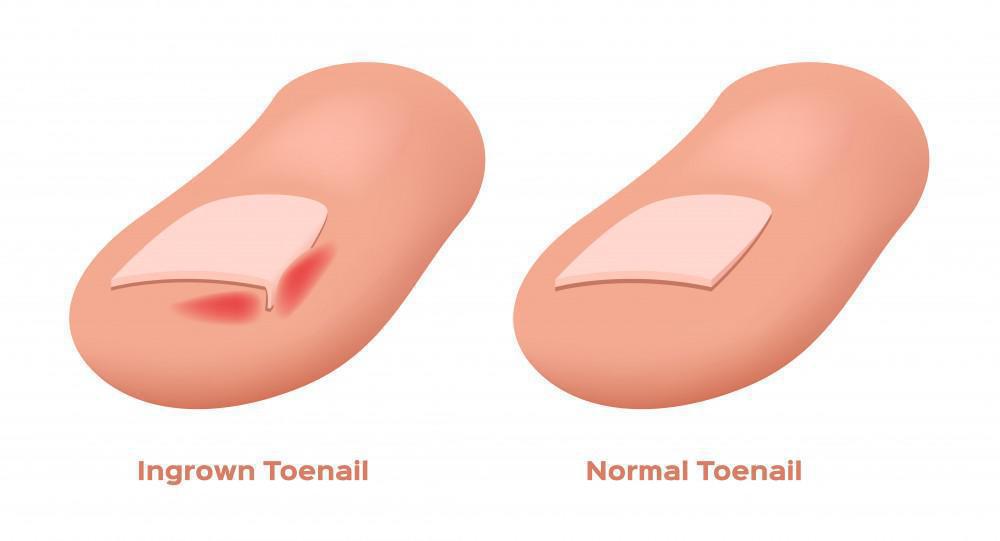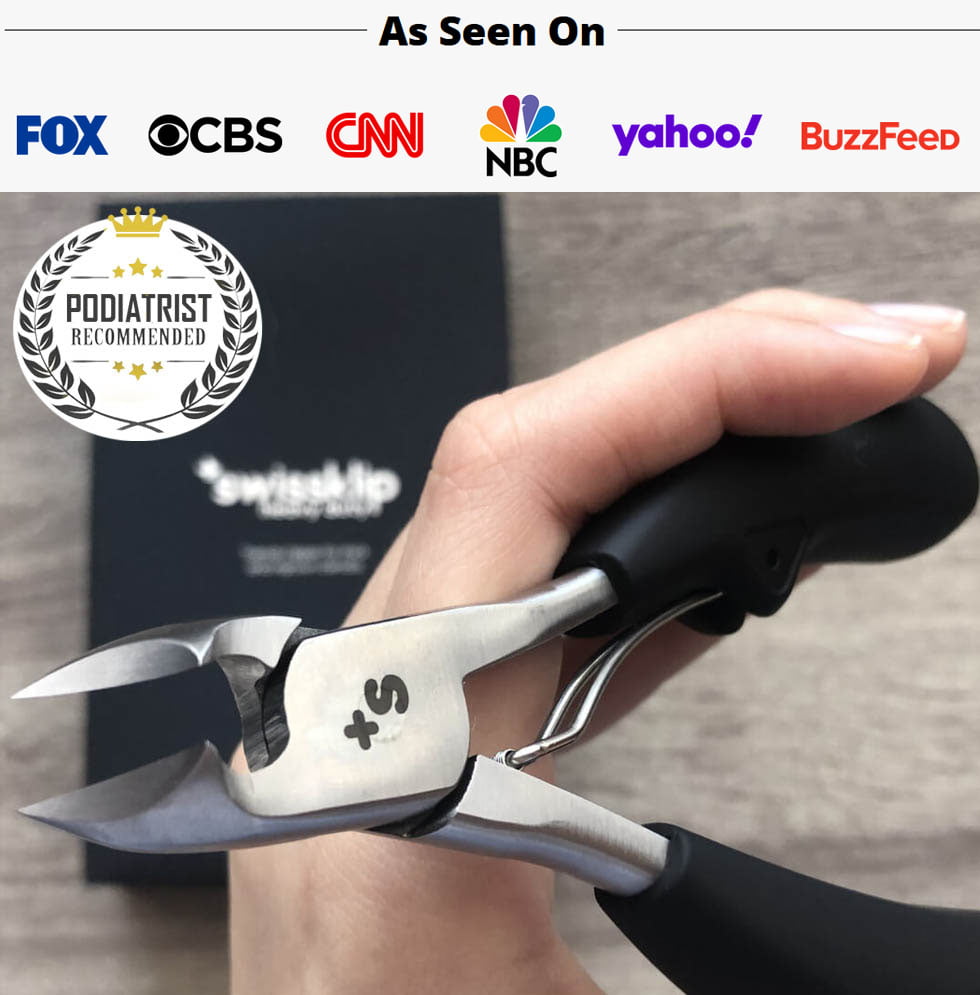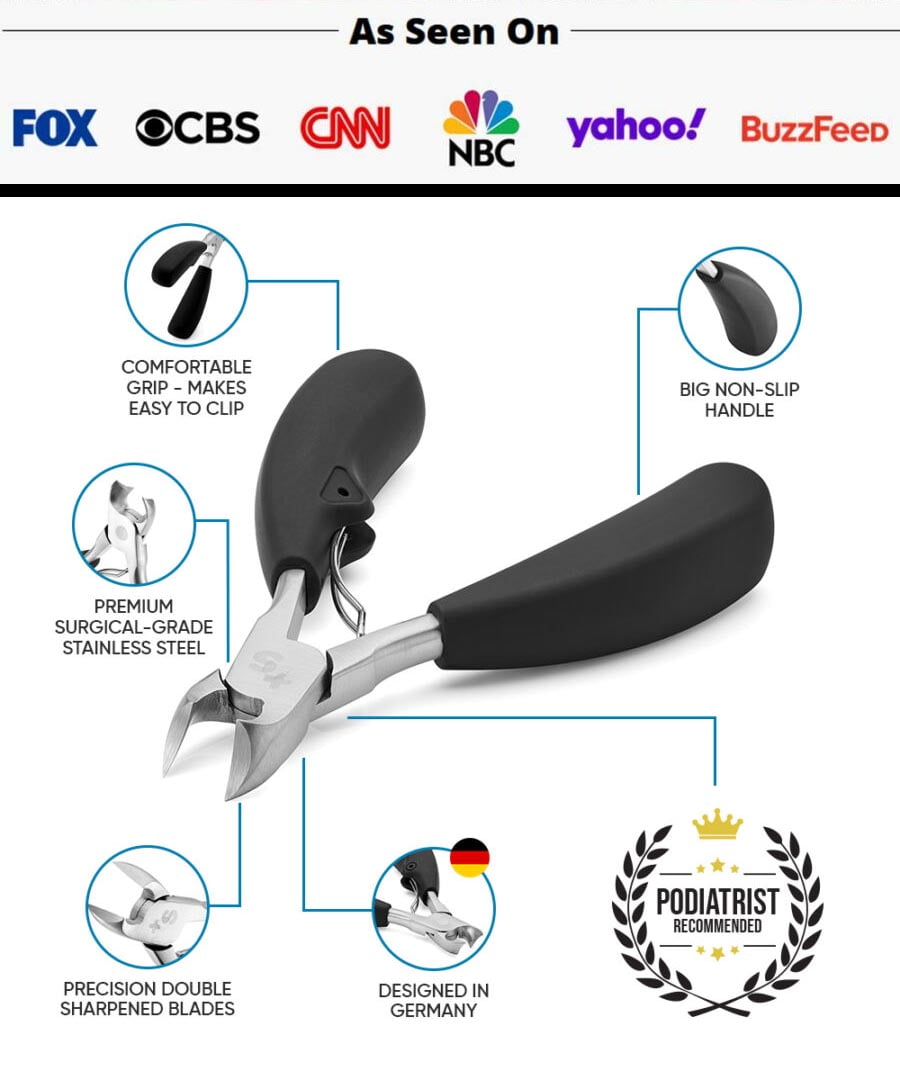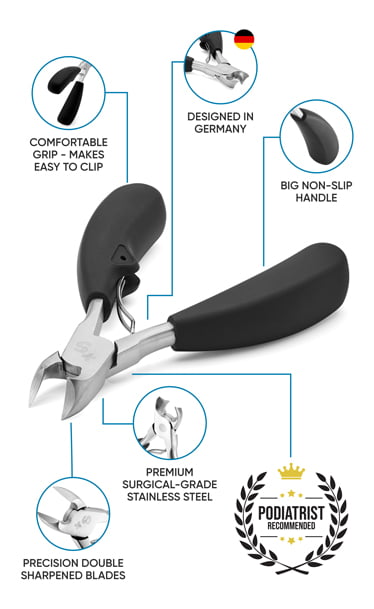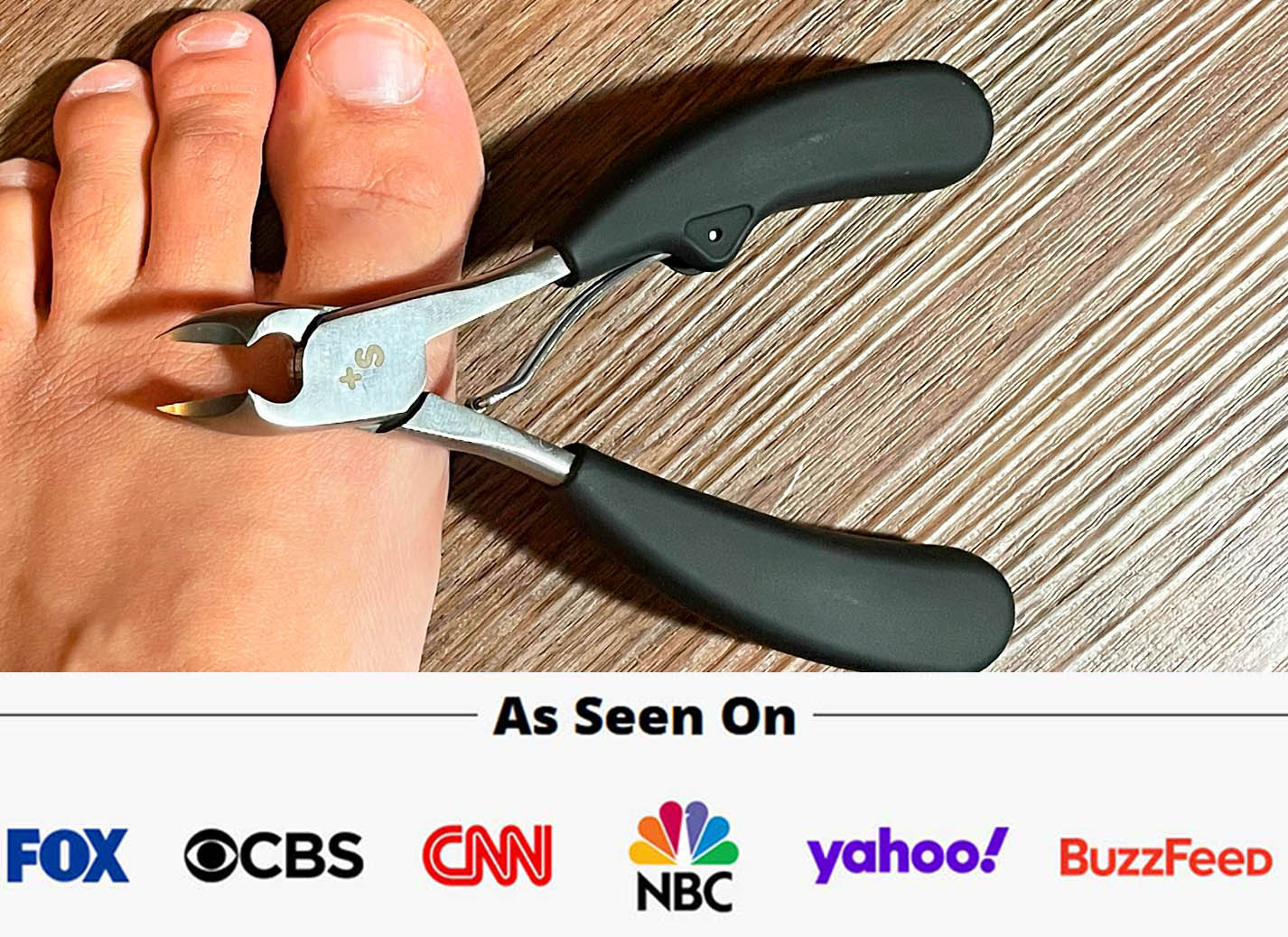What is an Ingrown Toenail?
An ingrown toenail, also known as onychocryptosis, is a common condition in which the edges or corners of the toenail grow into the surrounding skin. This can cause pain, swelling, redness, and infection in the affected area.
Ingrown toenails can occur on any toe, but they are most common on the big toe. They can be caused by a variety of factors, including tight shoes or socks that put pressure on the toenail, improper nail trimming, trauma to the nail, or fungal infections of the toenail.
We will explain here why ingrown toenail occurs, how to prevent ingrown toenails, proper foot care techniques, how to avoid ingrown toenails and how to treat them, so you can help prevent the development of ingrown toenails.
Get the Best Clipper for Ingrown Toenails for Only $34.99
Where do Ingrown toenails hurt?
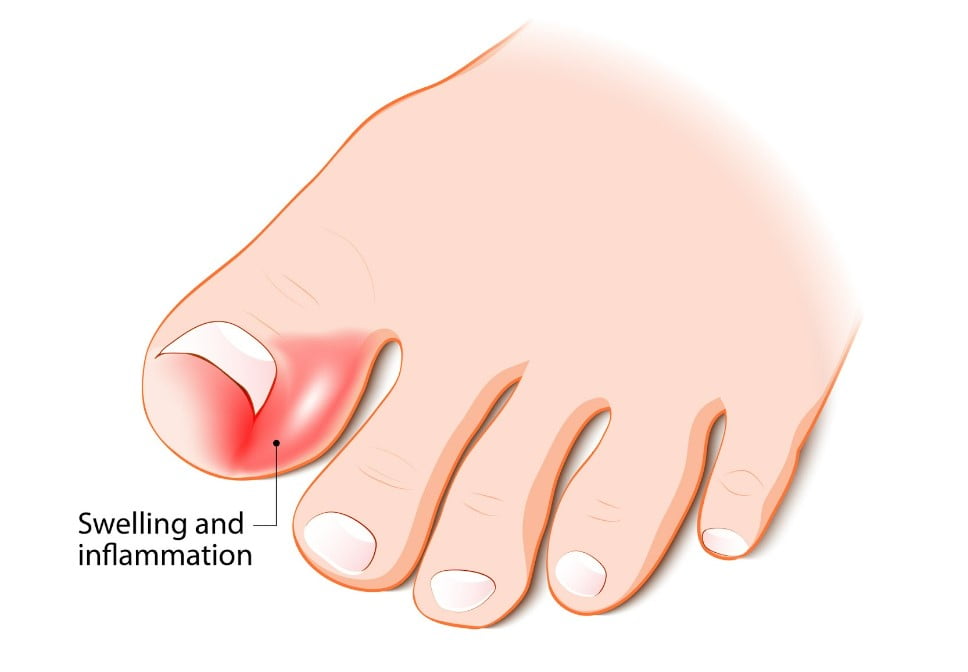
Ingrown toenails typically cause pain in the area around the affected nail. The pain may be felt in the toe itself, on the sides of the nail, nail edge; or it may radiate to the surrounding skin. In some cases, the pain may be severe enough to make walking difficult or impossible.
The specific location of the pain may depend on the severity of the ingrown toenail and the underlying cause.
For example, if the ingrown nail is only slightly ingrown, the pain may be confined to the area around the nail.
If the toenail is more severely ingrown or if an infection has developed, the pain may be more widespread and may extend beyond the nail itself.
In addition to pain, other symptoms of an ingrown toenail may include swelling, redness, and drainage of pus or other fluids from the affected area. If you are experiencing these symptoms, it is important to seek medical attention to determine the cause and receive appropriate treatment.
Get the Best Clipper for Ingrown Toenails for Only $34.99
What are the symptoms of an Ingrown nail?
The symptoms of an ingrown toenail may vary depending on the severity of the condition and the underlying cause.
Common symptoms of an ingrown toenail include:
Pain.
An ingrown toenail can cause pain when wearing shoes or walking, especially if the nail is severely ingrown or if an infection has developed.
Swelling.
The skin around the affected nail may be swollen and tender to the touch.
Redness.
The skin around the affected nail may be red and inflamed, indicating the presence of an infection or other issue.
Drainage.
If an infection has developed, the affected area may drain pus or other fluids.
Difficulty walking.
In severe cases, the pain and swelling associated with an ingrown toenail may make it difficult or impossible to walk.
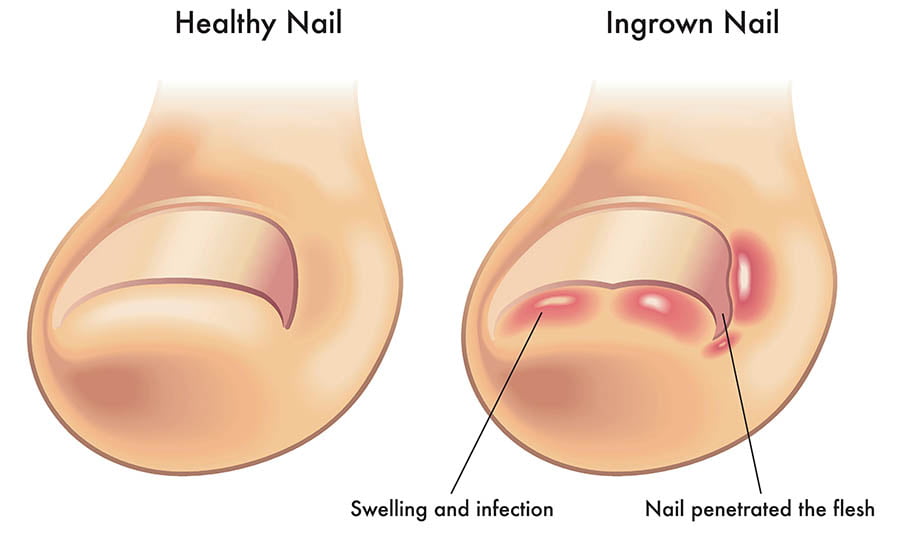
If you are experiencing these symptoms, it is important to seek medical attention to determine the cause and receive appropriate ingrown toenail treatment.
A healthcare provider can determine the best course of action, which may include antibiotics to treat or prevent infection, pain medication to alleviate discomfort, and partial nail avulsion or removal of the ingrown portion of the nail.
Get the Best Clipper for Ingrown Toenails for Only $34.99
What are the causes of Ingrown Toenails?
The underlying cause of an ingrown toenail determines the appropriate treatment and prevention measures. There are several possible causes of ingrown toenails, including:
Curved or Thick Toenails.
Ingrown toenails can also be more common in people who have naturally curved or thick toenails which usually happens to elderly. It is important to have proper nail and skin care for the elderly.
People with Medical Conditions.
People with certain medical conditions, such as diabetes or poor circulation, may also be at increased risk for developing ingrown toenails.
Tight shoes or socks.
If you wear shoes that are too tight or socks that are too constricting, this can cause the toenail to be pressed against the skin, leading to an ingrown toenail. Tight shoes or socks can be avoided by wearing footwear that fits properly and does not exert excessive pressure on the toes.
Improper nail trimming.
Cutting the toenails too short or rounding the corners of the nail instead of trimming them straight across can increase the risk of an ingrown toenail. Improper nail trimming can be avoided by using a toenail clipper to cut the nails straight across and avoiding the temptation to round the corners. Read this article to learn how to cut your nails like a pro and avoid ingrown toenails.
Trauma to the nail.
Injuries to the nail or toe, such as stubbing the toe or dropping a heavy object on the foot, can cause the nail to become ingrown. Trauma to the nail can be prevented by wearing protective footwear and taking care to avoid injury to the feet.
Fungal infections.
Fungal infections of the toenail can cause the nail to become thick and distorted, increasing the risk of an ingrown toenail. Fungal infections can be prevented by keeping the feet clean and dry, especially between the toes.
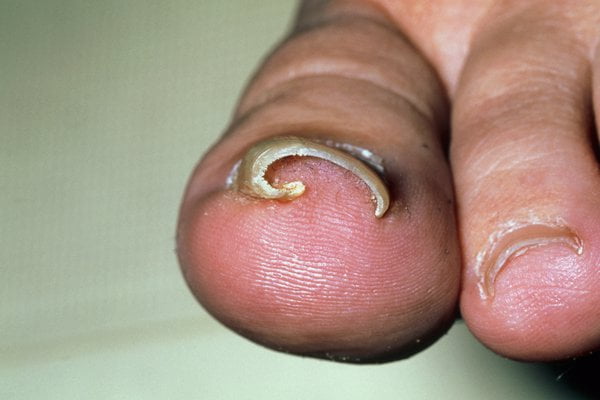
Ingrown nails can be caused by a variety of factors, including tight shoes or socks, improper nail trimming, trauma to the nail, and fungal infections. By taking proper care of the feet and nails and wearing appropriate footwear, you can help prevent the development of ingrown toenails.
Get the Best Clipper for Ingrown Toenails for Only $34.99
How to fix and get rid of an Ingrown toenail?
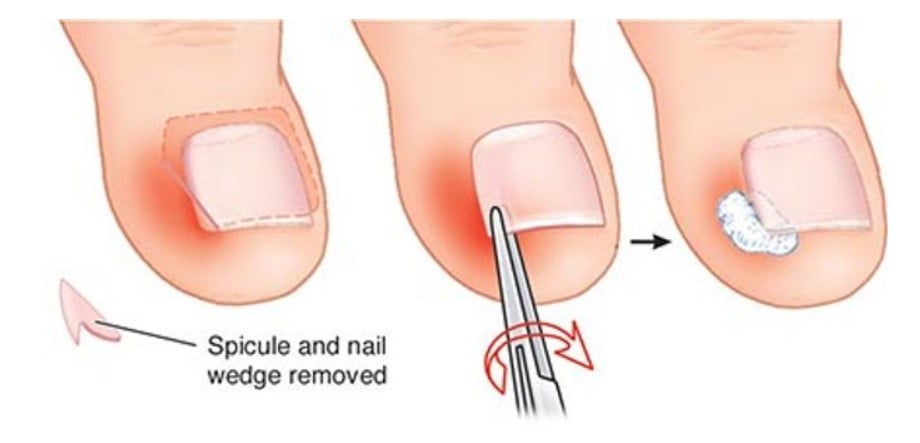
An ingrown nail occurs when the edges or corners of the big toe nail grow into the skin around the nail. This can be painful and can lead to an infected ingrown toenail if not treated properly.
Here are some steps you can take to Get Rid of an Ingrown Toenail:
- Soak the affected foot in warm water for 15-20 minutes several times a day. This can help soften the skin and nail, making it easier to lift the nail out of the skin.
- Gently lift the edge of the nail away from the skin using a cotton swab or a small piece of clean gauze. Be careful not to push the nail further into the skin.
- Place a small piece of cotton or dental floss under the nail to help keep it elevated and away from the skin.
- Once the ingrown toenail section is elevated, use a specially designed toenail clipper like Swissklip Heavy Duty, to trim away.
Get the Best Clipper for Ingrown Toenails for Only $34.99
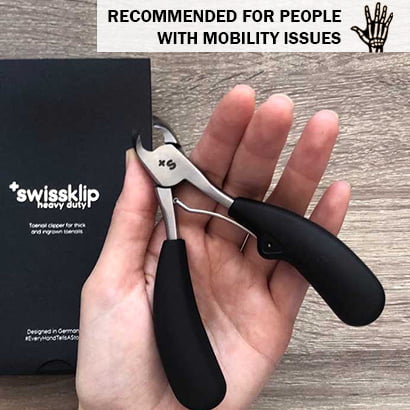
If the nail is still embedded in the skin or if you are experiencing severe pain or infection, you may need to see a doctor. They can numb the area and gently lift the nail out of the skin.
In some cases, they may need to perform a nail avulsion (remove a portion of the nail) or prescribe antibiotics to treat an infection.
How to choose the Best Clipper for Ingrown Toenails?
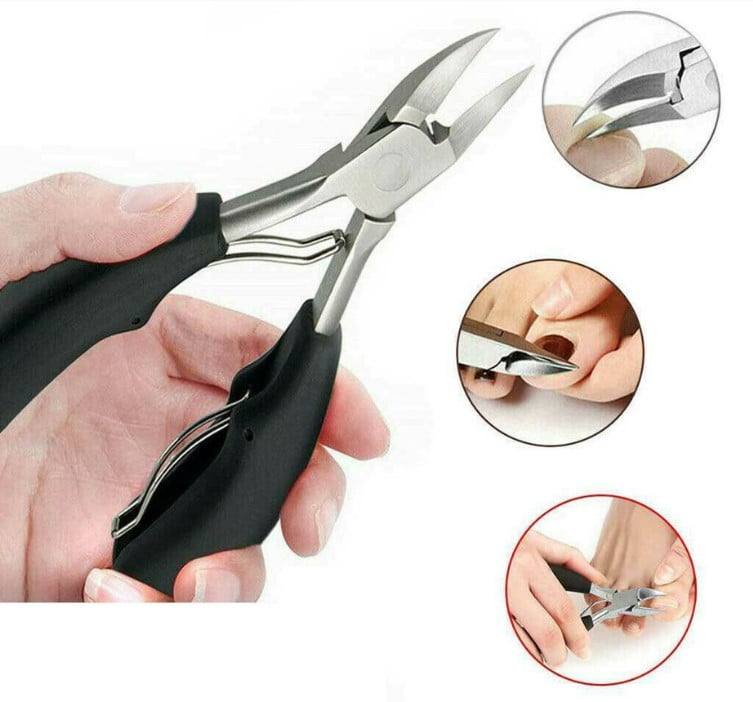
When choosing a toenail clipper to remove an ingrown toenail, it’s important to look for a clipper with a sharp blade like Swissklip Heavy Duty.
This will allow you to more easily clip the nail and avoid damaging the surrounding skin. It’s also a good idea to look for a clipper with a wide, sturdy handle to provide a good grip and control while you are clipping.
It’s generally recommended to use a toenail clipper specifically designed for toenails like Swissklip Heavy Duty, as these are usually larger and more sturdy than fingernail clippers. This can help prevent the clipper from bending or breaking while you are using it.
Swissklip Heavy Duty has an ergonomic handle for those who have difficulty gripping or manipulating the clipper due to arthritis or other conditions, having a clipper with a lever-style clipper allows you to use leverage to clip the nail rather than relying on finger strength.
It’s also a good idea to have individual clippers for every family member in the house to avoid sharing any bacteria or infections.
Get the Best Clipper for Ingrown Toenails for Only $34.99
What could be bad complications of ingrown toenail?
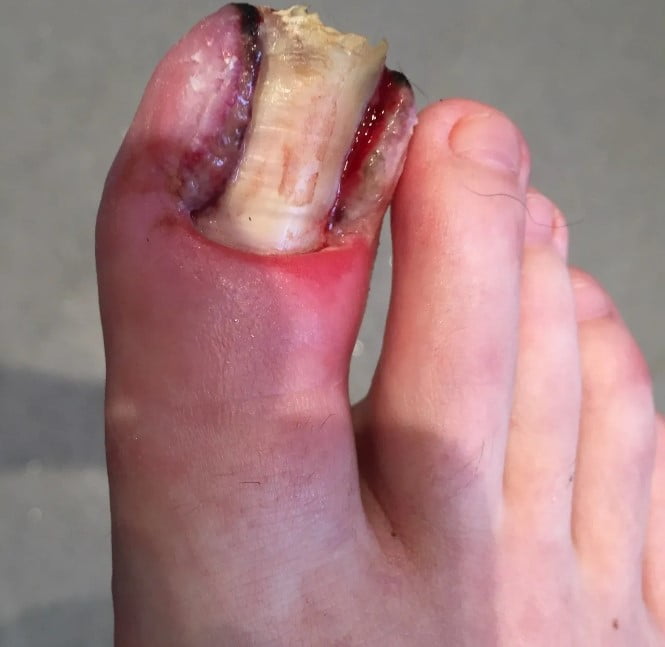
It’s important to take care of an ingrown toenail as soon as possible to prevent infection and further complications. Possible complications of ingrown toenail include infection, abscess formation, and chronic pain.
To reduce the risk of developing an ingrown toenail, you can:
Wear properly fitting shoes and socks: Avoid shoes that are too tight or constricting and choose socks that fit well and do not bunch up or cause pressure on the toes.
Trim your toenails properly: Use a toenail clipper to trim your toenails straight across, avoiding the temptation to round the corners.
Protect your feet from injury: Wear protective footwear when participating in activities that may cause trauma to the feet.
Keep your feet clean and dry: Wash your feet daily and dry them thoroughly, especially between the toes. This can help prevent fungal infections and other conditions that may increase the risk of an ingrown toenail.
If you are unable to treat the ingrown toenail at home or if you have diabetes or other conditions that may affect your ability to heal, it’s important to seek medical treatment.
Get the Best Clipper for Ingrown Toenails for Only $34.99
Can Ingrown Toenails go away?
Ingrown toenails can sometimes go away on their own, especially if they are mild and caught in the early stages, by taking action with a proper toenail clipper like Swissklip Heavy Duty. However, it is important to seek medical attention if you suspect you have a serious ingrown toenail, as the condition can progress and cause more serious complications if left untreated.
If an ingrown toenail is mild and caught early, a foot specialist provider may recommend soaking the affected foot in warm water and gently massaging the skin around the nail to encourage the nail to grow out of the skin. This can help to relieve discomfort and prevent the ingrown toenail from worsening.
However, if the ingrown toenail is more severe (grow into the skin) or if an ingrown toenail infection has developed, more aggressive treatment may be necessary. This may include antibiotics to treat or prevent infection, pain medication to alleviate discomfort, and partial nail avulsion, most commonly known as removal of the ingrown portion of the nail. In some cases, the entire nail may need to be removed to prevent the ingrown toenail from recurring.
As far as toenail clippers are concerned, it is important to use a pair that is the appropriate size and shape for your toenails. Avoid using scissors or clippers that are too small or have curved edges, as these may increase the risk of cutting the nail at an improper angle.
Toenail clippers like Swissklip Heavy Duty Toenail clipper, with a straight edge and a wide jaw are generally the best choice for preventing ingrown toenails.
Get the Best Clipper for Ingrown Toenails for Only $34.99

